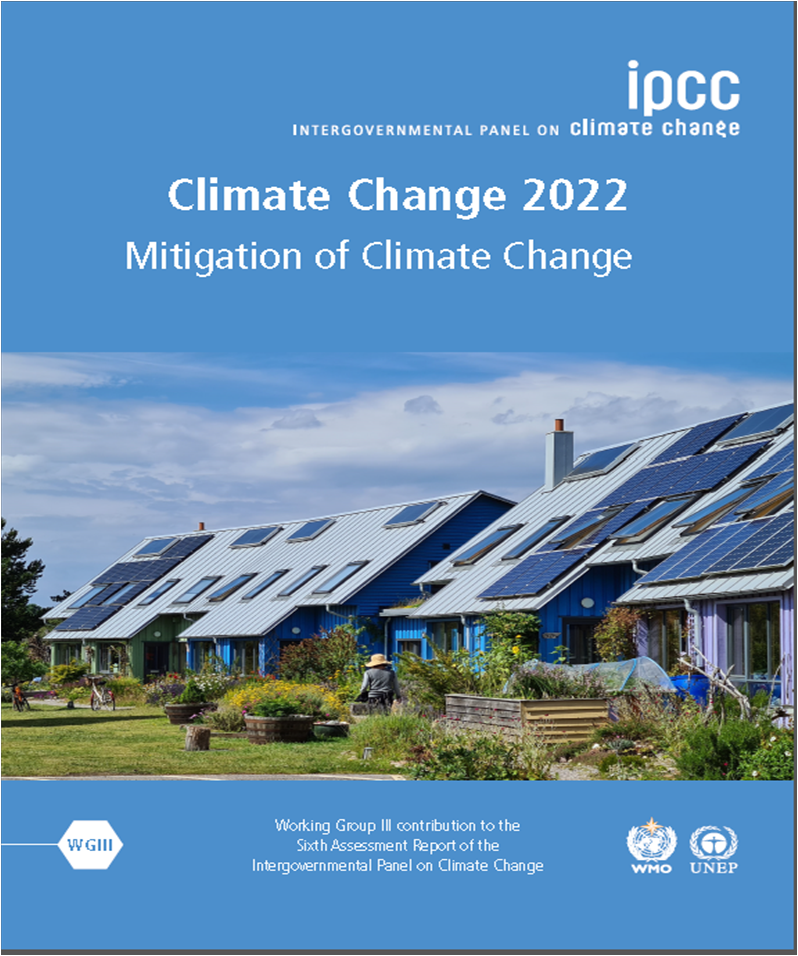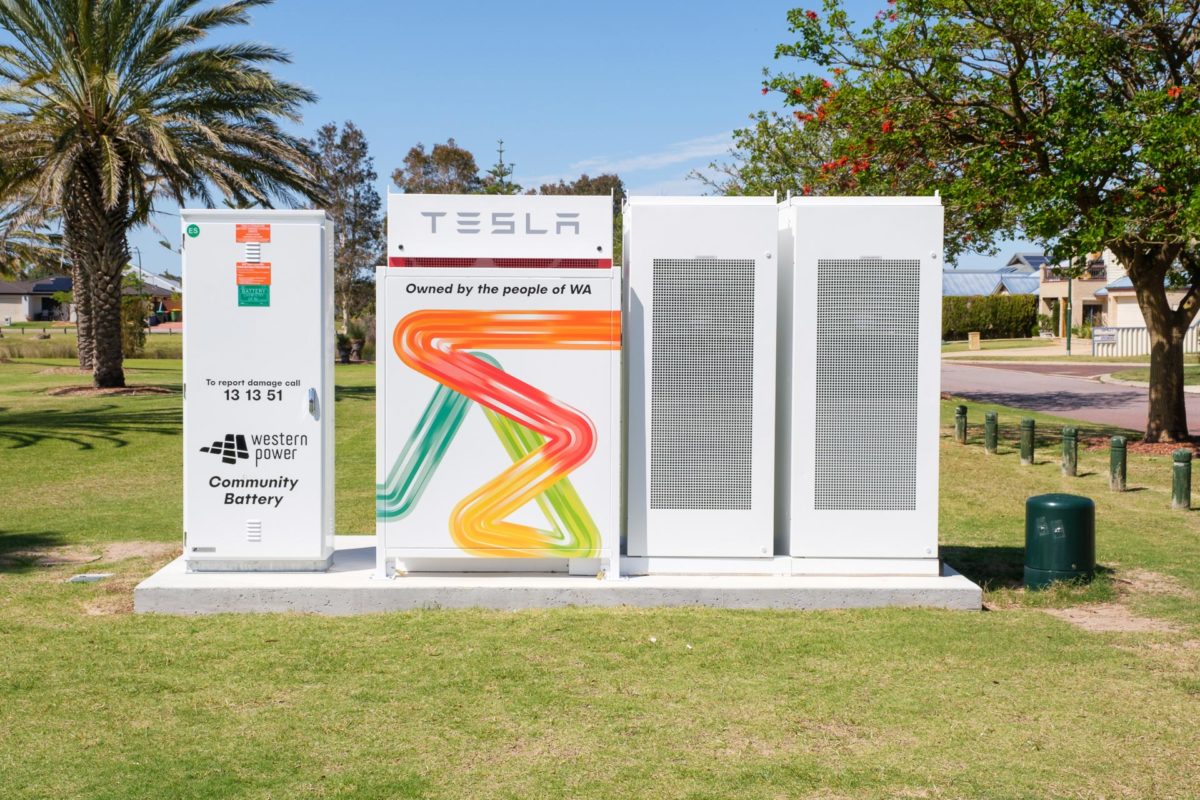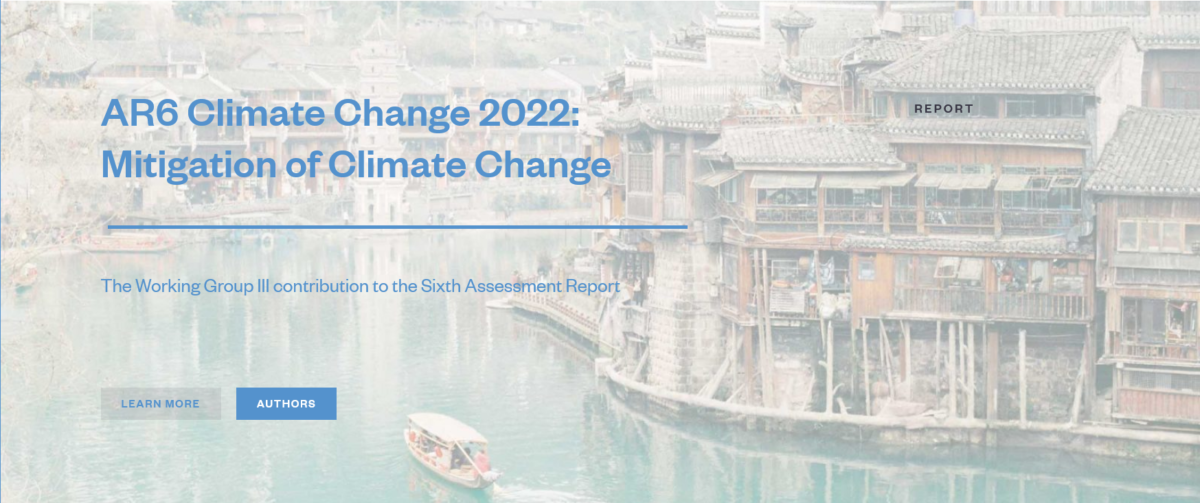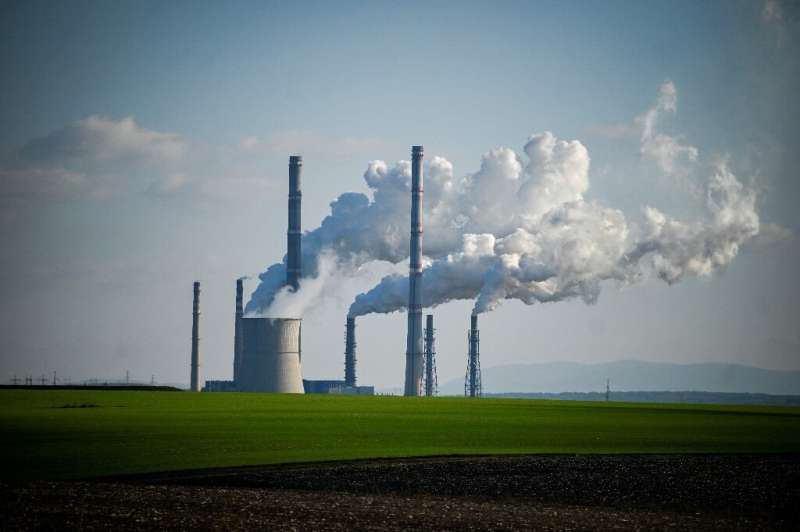IPCC: Stopping emissions no longer enough on its own
Part III of the IPCC’s 6th Assessment published late on 4 April says net zero alone won’t stop global warming. Carbon capture is also needed.
According to the Third Part of the IPCC’s 6th Assessment Report published this week, our last chances to stop and reverse the still accelerating global warming are running out of time. If we don’t act effectively within the next three years or so, humanity will be condemned to extreme hardship and dieoffs as increasingly large areas of our only planet become effectively uninhabitable because of high temperatures and extreme weather, and our agricultural systems also begin to fail for the same reasons. I have already commented extensively on Parts I and II of the report and consequently have reached and written about many of the topics covered in Part III, and my conclusions from the evidence are even more grim than the IPCC’s. So, other than providing a bit of background on the IPCC and possible limitations of their authoring process, in this post I simply present links to 12 independent commentaries.
Background
The Intergovernmental Panel on Climate Change (!PCC) was established by the United Nations in 1988 to study and make recommendations relating to climate changes triggered by the greenhouse gas released into the atmosphere beginning in the Industrial Revolution by the burning of coal and other fossil carbons for energy production. It presents the most solidly based and peer reviewed scientific understanding of the rapidly expanding climate crisis there is. However, because of its political and academic foundations it has and will consistently under-represent novel and extreme consequences of the on-going global warming. (The reasons for this scientific reticence or ‘conservatism‘ are discussed and explained in detail in my presentation: Some fundamental issues relating to the science underlying climate policy: The IPCC and COP26 couldn’t help but get it wrong.)
However, even in the face of these constraints, the AR6 part 3 Report: Climate Change 2022 – Mitigation of Climate Change, accepts and is based on the extensive research reported in parts 1 and 2 of the full report that failure to stop and reverse global warming before temperatures reach 2.0 °C (or preferably 1.5 °C) will be catastrophic for humans and the biosphere.
Where are we now with the physical state of our atmosphere that drives climate change
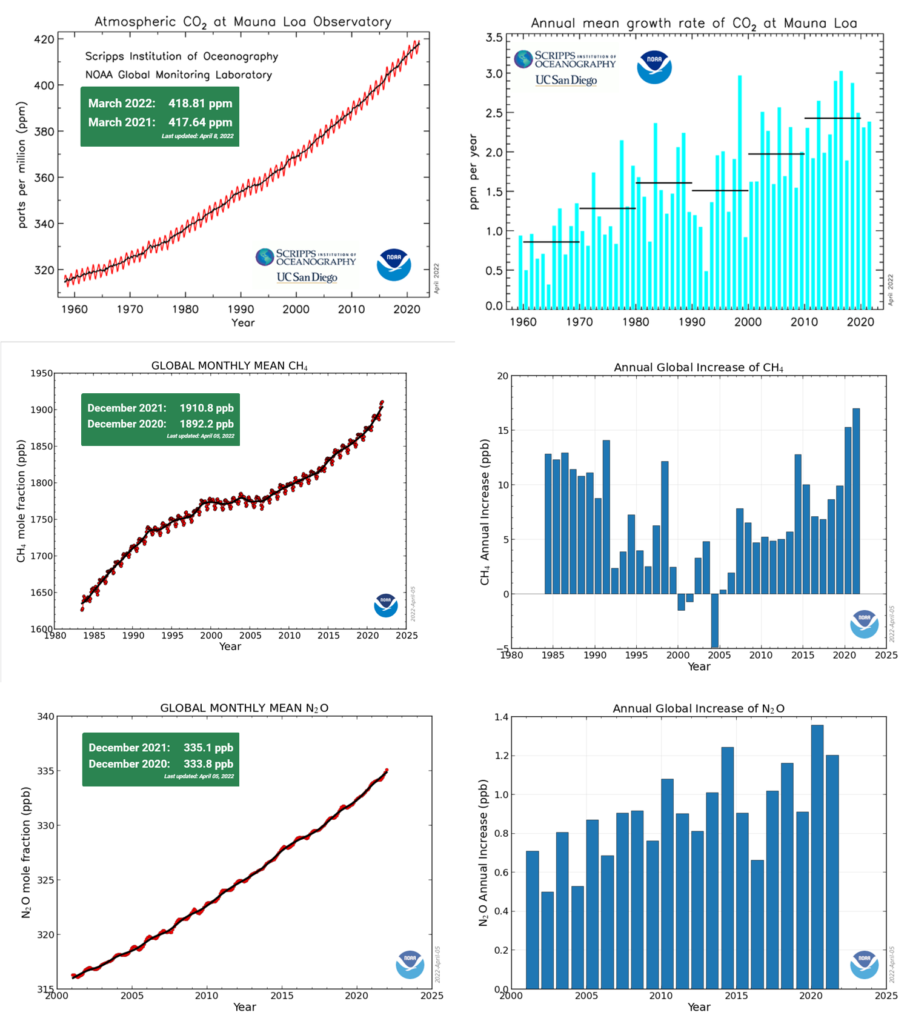
The rising concentrations of the three most important greenhouse gases shown above record the physical physical measurements in parts per million or parts per billion (compared to the total number of gas molecules of any kind in the atmosphere) as reported from the Mouna Loa (Hawaii) climate observatory. Details on how the samples were collected, processed and measured are available on the observatory web site. One thing worth noting, is that the longest base-line record from the observatory itself at 3400 meters elevation in the oceanic sub-tropics (shown here) that peaked in February is not identical to the worldwide average CO₂ from multiple sites shown for the Global Monthly Mean CO2 that is still rising in March. NH₄ and N₂O graphs show global means.
It is also worth nothing that the atmospheric concentrations for all of the gases reflect both human generated emissions AND the Earth’s ‘natural’ emissions for each year. We can control human emissions, but the natural emissions increase significantly with each rise in global average temperature.
The chart below shows RELATIVE changes in the global average temperature for each year relative to the global temperature averaged over the 30 years years 1951 through 1980. Earth’s temperature is based on a balance between the absorption of energy from solar radiation at ‘visible’ wave lengths by the planet and everything on it, and the emission of infrared energy by the planet and everything on it. Greenhouse gases heat the planet by blocking some outgoing infrared wave lengths causing the planet to warm until enough energy can be emitted at shorter (more energetic) wavelengths to balance the incoming visible radiation. Again this is a purely physical process that can be measured to relatively high precision.
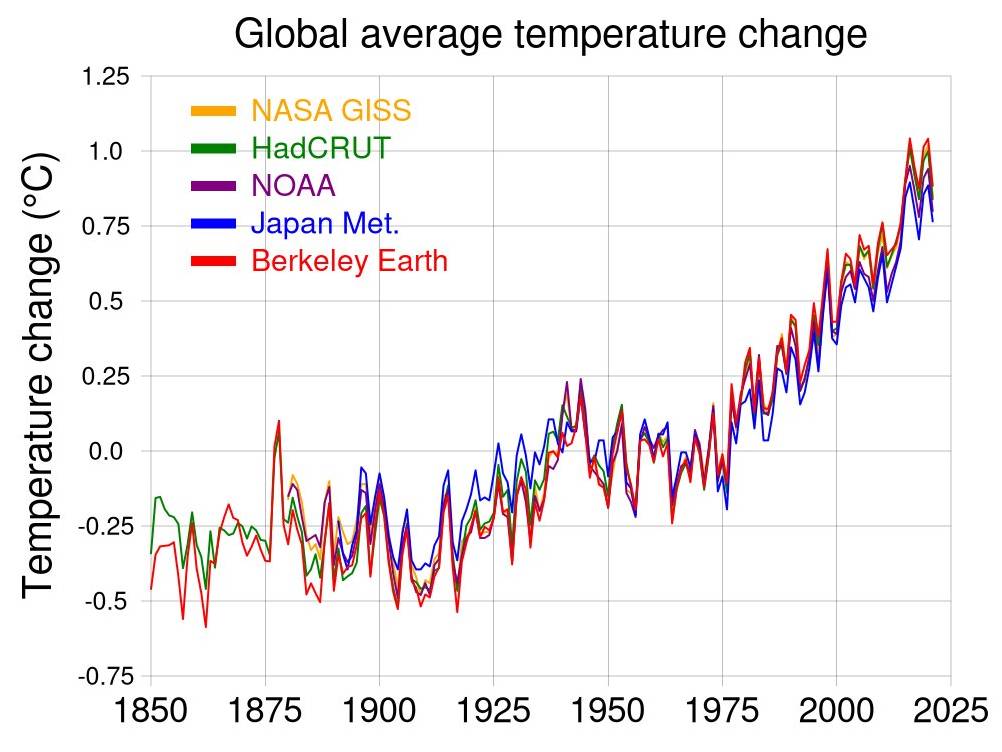
File:20200324 Global average temperature – NASA-GISS HadCrut NOAA Japan BerkeleyE.svg (Version 12) – for more details on sources and construction of the graph see: Wikimedia Commons.
The early trends illustrated by these facts are what drove the formation of the IPCC and its series of increasingly desperate calls to action in its series of “Assessment Reports” involving thousands of well qualified research scientists working as authors over the years of it existence. The 6th Assessment Report discussed here consists of 3 parts: I – The Physical Science Basis: 3949 pages, published 7 Aug 2021; II – Impacts, Adaptation and Vulnerability: 3675 pages, published 27 Feb 2022, and III – Mitigation of Climate Change: 2913 pages, published 4 April 2022. Together the full 3 part report includes 10,537 pages of meticulously peer-reviewed content. My December 202 presentation, Some fundamental issues relating to the science underlying climate policy: The IPCC and COP26 couldn’t help but get it wrong details the IPCC’s rigorous processes for producing the reports. My major criticism is that these processes add years of delay between scientific observations and publication, that the political and academic/institutional environments lead to reticence and understatement of risks, and that an over-reliance on mathematization gives the impression that complexly and chaotically dynamical systems such as the generation of weather and climate are more accurate than they can actually be.
Whatever humbug our governments tell us, we won’t know if we can get off the road to Earth’s Hothouse Hell state until all of the above curves are actually trending downward. As long as they point upwards, it is a clear indication that we are headed towards runaway warming and the unsurvivable hothouse.
Simply stated, where the IPCC observes that the future of humanity is dire, the reality is that it will probably be even worse than that.
What do others make of the IPCC’s Part III report?
Following are 12 independent takes on the IPCC’s recommendations for what we can do that might mitigate the global warming that is already dialed into Earth’s Climate System. Urgently stopping human carbon emissions on its own is no longer enough to stop warming soon enough to avoid major catastrophic damage. We will also have to remove excess carbon from the atmosphere with still unproven technolgies:
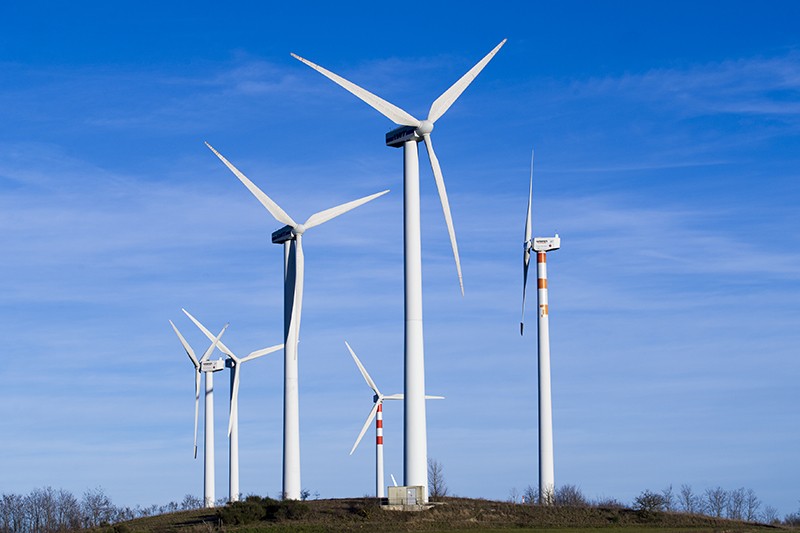
by Jeff Tollefson, 05/04/2022 in Nature / News
IPCC’s starkest message yet: extreme steps needed to avert climate disaster
Radical emissions cuts combined with some atmospheric carbon removal are the only hope to limit global warming to 1.5 °C, scientists warn.
Humanity probably isn’t going to prevent Earth from at least temporarily warming 1.5 °C above pre-industrial levels — but aggressive action to curb greenhouse-gas emissions and extract carbon from the atmosphere could limit the increase and bring temperatures back down, according to the latest report from the United Nations Intergovernmental Panel on Climate Change (IPCC). The report makes it clear, however, that the window is rapidly closing, and with it the opportunity to prevent the worst impacts of global warming. Above the 1.5 °C limit — set by the Paris climate agreement in 2015 — the chances of extreme weather and collapsing ecosystems grow.
Read the complete article….
Climate change is hitting the planet faster than scientists originally thought
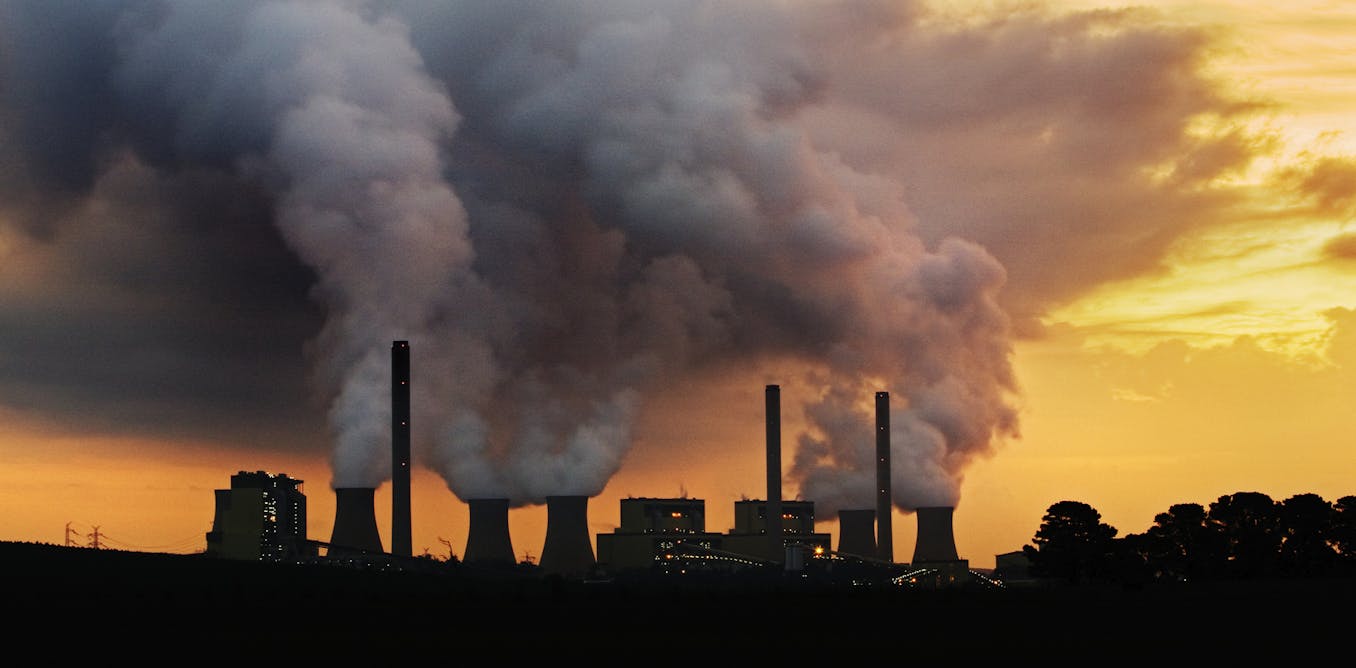
by John Quiggin, 06/04/2022 in The Conversation
Time’s up: why Australia has to quit stalling and wean itself off fossil fuels
If the world acts now, we can avoid the worst outcomes of climate change without any significant effect on standards of living. That’s a key message from the new report from the Intergovernmental Panel on Climate Change (IPCC).
The key phrase here is “acts now”. Jim Skea, co-chair of the IPCC working group behind the report, said it’s “now or never” to keep global warming to 1.5℃. Action means cutting emissions from fossil fuel use rapidly and hard. Global emissions must peak within three years to have any chance of keeping warming below 1.5℃.
Unfortunately, Australia is not behaving as if the largest issue facing us is urgent – in fact, we’re doubling down on fossil fuels.
In recent years, Australia overtook Qatar to become the world’s largest exporter of liquefied natural gas (LNG). We’re still the second-largest exporter of thermal coal, and the largest for metallurgical coal.
Read the complete article….
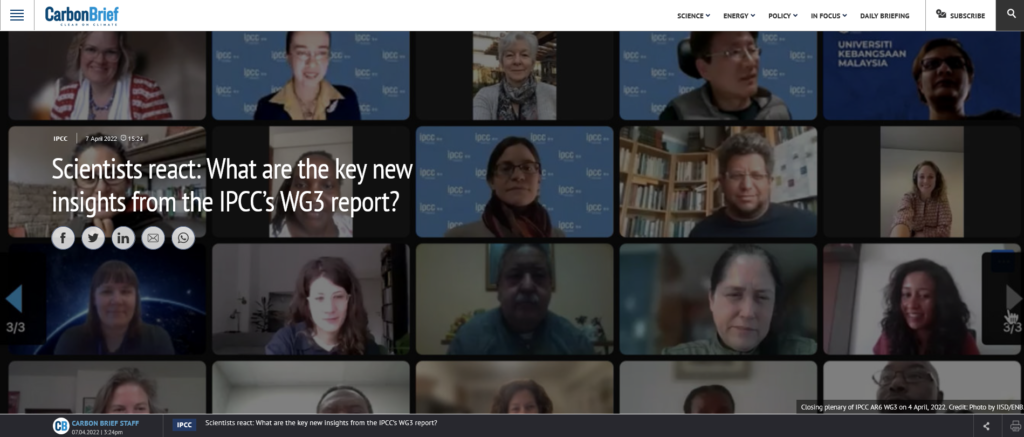
by Carbon Brief Staff, 07/04/2020 in Carbon Brief
Scientists react: What are the key new insights from the IPCCs WG3-report
A new report from the UN’s Intergovernmental Panel on Climate Change (IPCC) outlines what progress has been made in tackling global warming so far – and what will be needed for the world to curb emissions and achieve its climate targets.
It is the third part of the IPCC’s sixth assessment report (AR6), a process that comes around every six or seven years and aims to provide a comprehensive view of the state of knowledge on climate change. (See Carbon Brief’s in-depth Q&A.)
…
This report, by the IPCC’s Working Group III (WG3) “provides an updated global assessment of climate change mitigation progress and pledges, and examines the sources of global emissions”
Read the complete article….
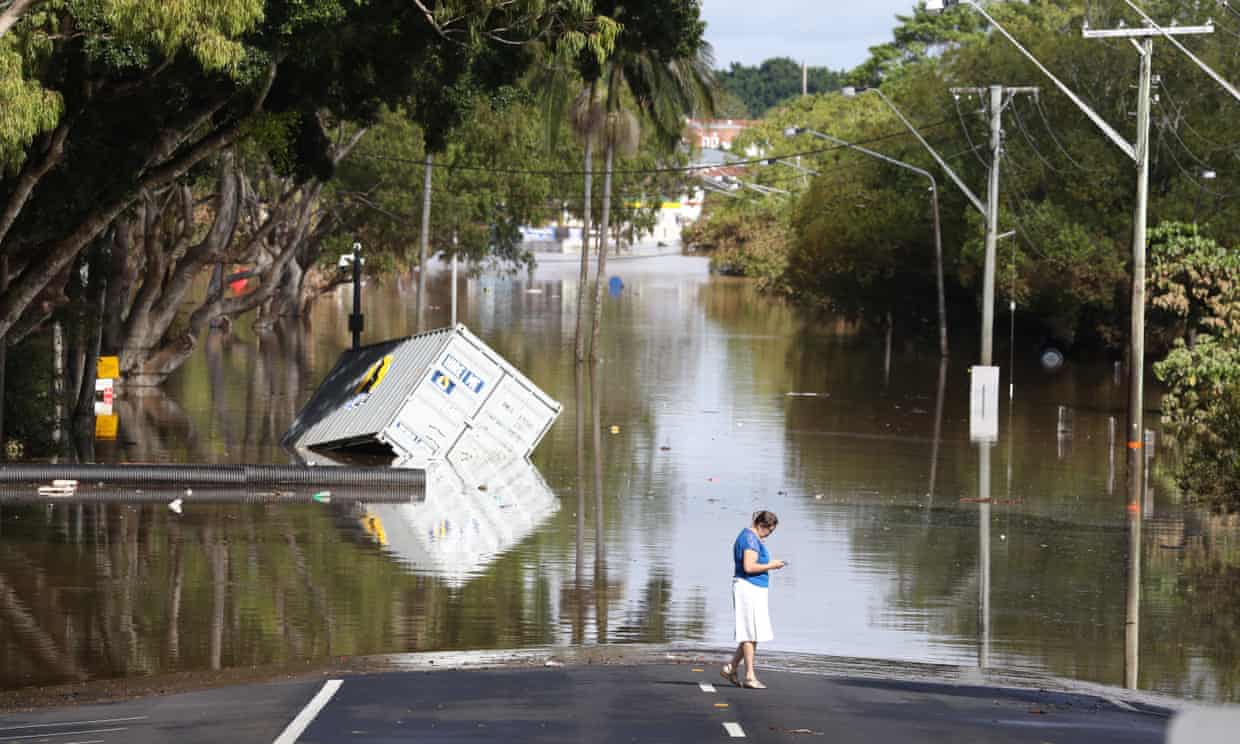
by Damian Carrington, 04/04/2022 in The Guardian
IPCC report: ‘now or never’ if world is to stave off climate disaster
Greenhouse gas emissions must peak by 2025, say climate scientists in what is in effect their final warning.
The world can still hope to stave off the worst ravages of climate breakdown but only through a “now or never” dash to a low-carbon economy and society, scientists have said in what is in effect a final warning for governments on the climate.
Greenhouse gas emissions must peak by 2025, and can be nearly halved this decade, according to the Intergovernmental Panel on Climate Change (IPCC), to give the world a chance of limiting future heating to 1.5C above pre-industrial levels.
The final cost of doing so will be minimal, amounting to just a few percent of global GDP by mid-century, though it will require a massive effort by governments, businesses and individuals.
But the chances were narrow and the world was failing to make the changes needed, the body of the world’s leading climate scientists warned. Temperatures will soar to more than 3C, with catastrophic consequences, unless policies and actions are urgently strengthened.
Read the complete article….
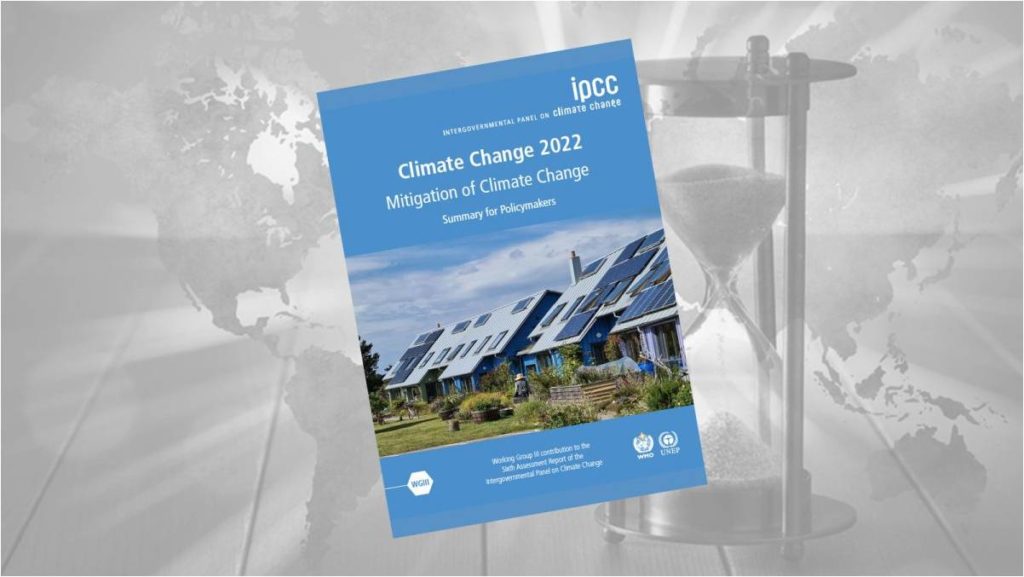
by, Dana Nuccitelli, 06/04/2022 in Yale Climate Connections
New IPCC report: Only political will stands in way of meeting the Paris targets:
The latest major climate assessment outlines the urgency and feasibility of rapid decarbonization to preserve the economy, health, and a stable climate.
In the just-released third installment of its Sixth Assessment Report (the first two volumes covered climate change causes and impacts), the Intergovernmental Panel on Climate Change (IPCC) summarizes the latest scientific research on efforts to mitigate climate change. Written by 278 authors from 65 countries, the new report can be summarized in one word: “urgency.”
To meet the Paris targets, the IPCC says that global emissions must peak immediately; that governments have not yet implemented sufficient policies to make that happen; and that continued expansion of fossil fuel infrastructure would create additional stranded assets potentially amounting to trillions of dollars in lost investments.
Read the complete article….
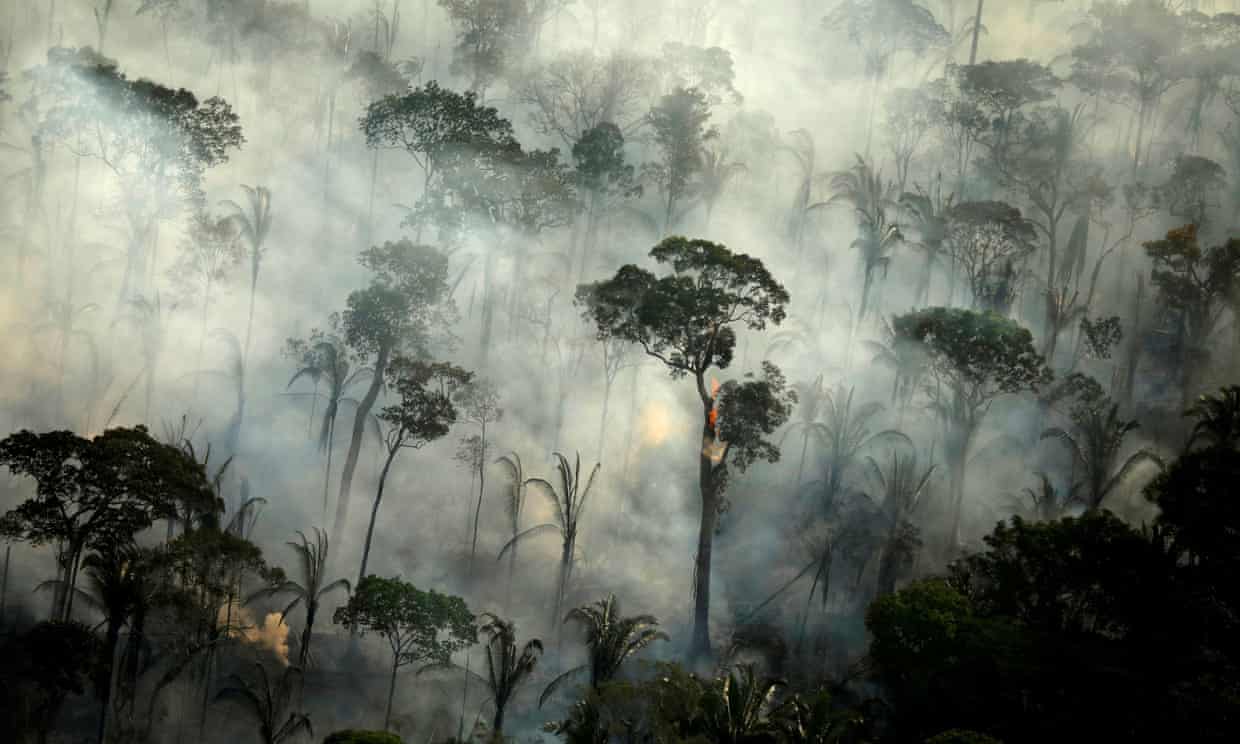
by Peter Kalmus, 07/04/2022 in The Guardian Opinion
Climate scientists are desperate: we’re crying, begging and getting arrested
On Wednesday, I was arrested for locking myself onto an entrance to the JP Morgan Chase building in downtown LA. I can’t stand by – and nor should you.
“Climate activists are sometimes depicted as dangerous radicals, but the truly dangerous radicals are the countries that are increasing the production of fossil fuels.” – United Nations Secretary General Antonio Guterres
I’m a climate scientist and a desperate father. How can I plead any harder? What will it take? What can my colleagues and I do to stop this catastrophe unfolding now all around us with such excruciating clarity?
Read the complete article….
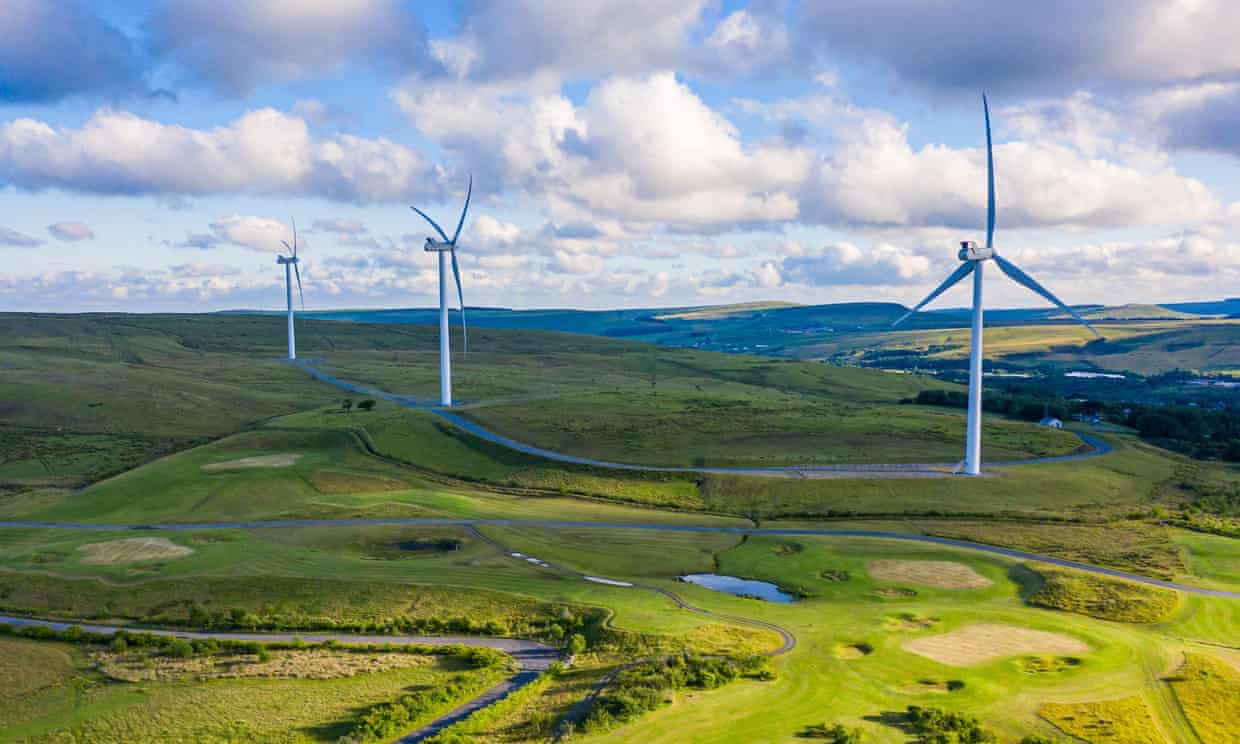
by Damian Carrington, 05/04/2020 in The Guardian
It’s over for fossil fuels: IPCC spells out what’s needed to avert climate disaster
Analysis: The third part of the panel’s report makes clear a century of rising emissions must end before 2025.
Thirty months: that is the very short time the world now has for global greenhouse gas emissions to finally start to fall. If not, we will miss the chance to avoid the worst impacts of the climate crisis.
Read the complete article….
The conclusion of the world’s scientists, collated by the Intergovernmental Panel on Climate Change and approved by all the world’s governments, says this reversal requires “immediate and deep” cuts in emissions everywhere.
The language of the third part of the IPCC’s report is less dramatic than the first two, which placed “unequivocal” blame on us for putting a “livable future” in grave peril. Rather than plainly stating the scale of the climate emergency, the new assessment spells out what needs to be done. Its text was therefore haggled over furiously by those states with much to lose.

by Thomas Wiedmann et al., 05/04/2022 in The Conversation
IPCC finds the world has its best chance yet to slash emissions – if it seizes the opportunity
The world has its best chance yet to reduce greenhouse gas emissions quickly, but hard and fast cuts are needed across all sectors and nations to hold warming to safe levels, the global authority on climate change says.
The Intergovernmental Panel on Climate Change (IPCC) report, released today, says opportunities to affordably cut global emissions have risen sharply since the last assessment of this kind in 2014. But the need to act has also become far more urgent.
The report is the definitive assessment of how well the world is doing in finding solutions to rising temperatures. We each contributed expertise to the report.
Here, we explain key aspects of the findings and what it means for the world, including Australia.
Read the complete article….
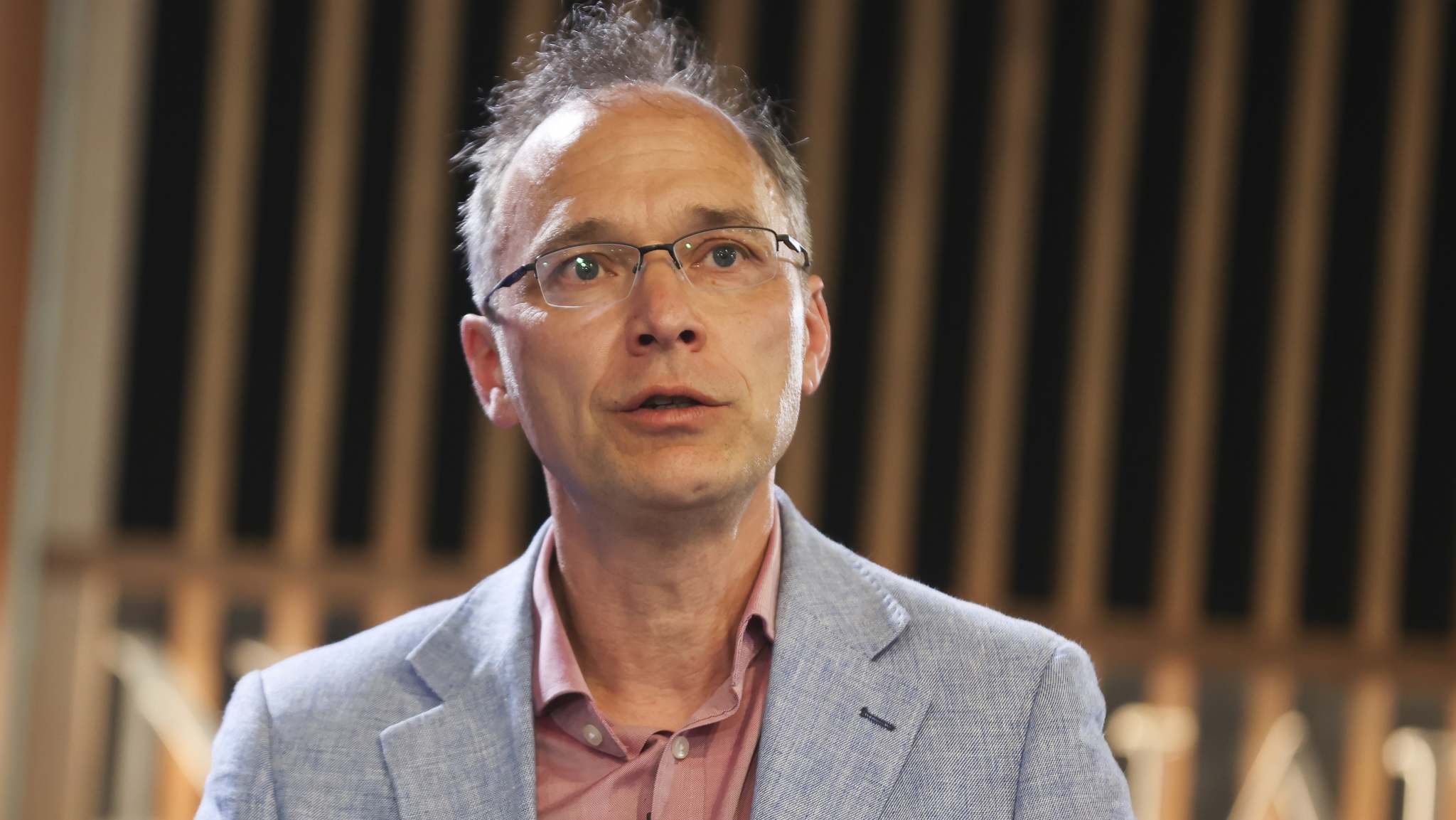
by Nick O’Malley, 05/04/2022 in The Age
Goal of holding global warming to 1.5 degrees ‘no longer plausible’: UN
The goal of holding global warming to 1.5 degrees is no longer likely to be achieved, the latest report of the United Nations chief climate body says, though scientists still believe warming may be stabilised and returned under the Paris Agreement’s more ambitious warming target after a period of “overshoot”.
The report by the Intergovernmental Panel on Climate Change (IPCC), published early on Tuesday morning Australian time, was evidence of a damning “litany of broken promises” and a “file of shame”, the UN Secretary General Antonio Guterres said in a speech after the release of the report.
Mr Guterres, whose language on climate has become increasingly strong since the lead-up to the COP26 climate talks last year, catalogued the empty pledges that put humanity “firmly on track towards an unlivable world”.
He said governments and companies had lied to people about their commitments to reducing emissions, and that though the world needed to see a 45 per cent reduction in emissions by the end of the decade the world was on track for a 14 per cent increase.
Read the complete article….

by Sam Wenger & Deanna D’Alessandro, in The Conversation
On top of drastic emissions cuts, IPCC finds large-scale CO₂ removal from air will be “essential” to meeting targets
Large-scale deployment of carbon dioxide removal (CDR) methods is now “unavoidable” if the world is to reach net-zero greenhouse gas emissions, according to this week’s report by the Intergovernmental Panel on Climate Change (IPCC).
The report, released on Monday, finds that in addition to rapid and deep reductions in greenhouse emissions, CO₂ removal is “an essential element of scenarios that limit warming to 1.5℃ or likely below 2℃ by 2100”.
CDR refers to a suite of activities that lower the concentration of CO₂ in the atmosphere. This is done by removing CO₂ molecules and storing the carbon in plants, trees, soil, geological reservoirs, ocean reservoirs or products derived from CO₂.
As the IPCC notes, each mechanism is complex, and has advantages and pitfalls. Much work is needed to ensure CDR projects are rolled out responsibly.
Read the complete article….
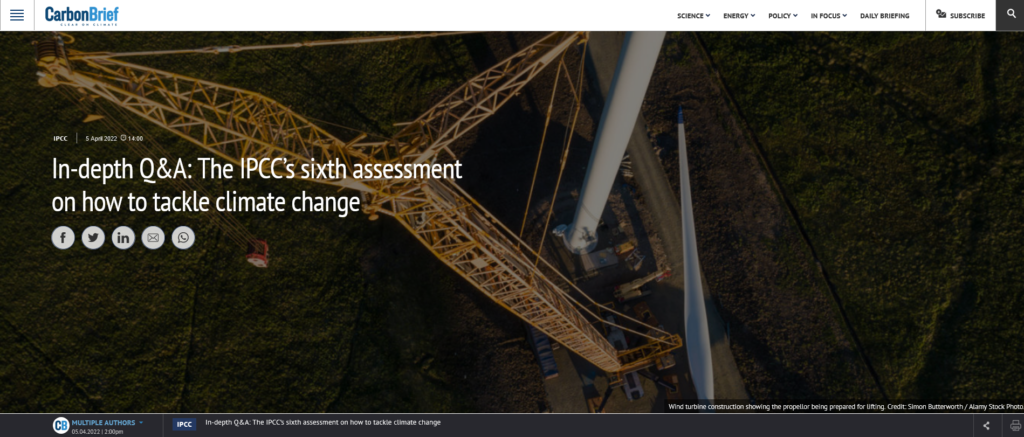
by Aruna Chandrasekhar et al., 05/04/2022 in Carbon Brief
In-depth Q&A: The IPCC’s sixth assessment on how to tackle climate change
Limiting global warming to 1.5C or 2C would mean “rapid and deep” emissions reductions in “all sectors” of the global economy, says the latest report from the United Nations’ Intergovernmental Panel on Climate Change (IPCC).
Instead, emissions have continued to rise – albeit at a slowing rate – and it will be “impossible” to stay below 1.5C with “no or limited overshoot” without stronger climate action this decade, says the new document, which forms part of the IPCC’s sixth assessment report (AR6).
It outlines how these emissions cuts could be achieved, including “substantial” reductions in fossil fuel use, energy efficiency, electrification, the rapid uptake of low-emission energy sources – particularly renewables – and the use of alternative energy carriers, such as hydrogen.
Read the complete article…
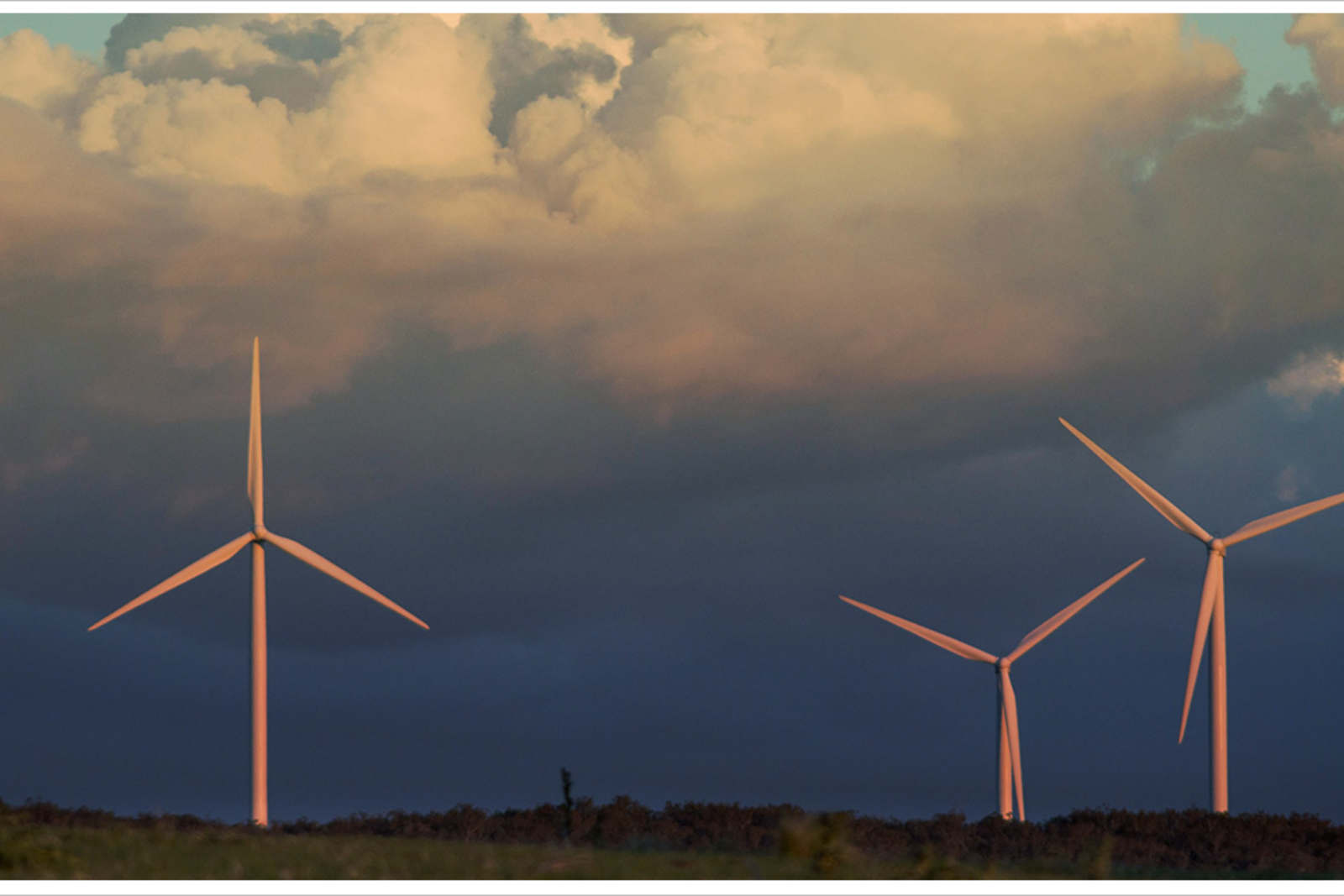
By Laura Chung and Nick O’Malley, 05 /04/2022 in The Age
UN offers new solutions to limit global warming
The new UN report shows the world is not on track to hold the global temperature rise to 1.5 degrees, the more ambitious Paris Agreement target, and that the window to achieving the goal is closing fast.
One of its lead authors, Australian National University Professor Frank Jotzo, says it may no longer be plausible that the world can make the necessary immediate global reduction in emissions.
But the report also presents a range of solutions that, if applied immediately, could limit global warming, some of which have not been part of previous versions.
Read the complete article….
What do we know about the LNP’s concerns and abilities to mitigate the climate crisis?
As noted in my previous post, many communities are already well prepared to switch from fossil to renewable energy sources as soon as the supply and distribution issues can be resolved. Given that governments supposedly exist to protect and keep their citizens safe from external threats (i.e., global warming) in this case) we should be able to expect that that they would be promoting and facilitating the growth and spread of renewable energy technologies. But, at least in the case of Australian federal and some state governments, they are dong precisely the opposite: denying the science, and blocking and humbugging efforts to research, develop, promote, and roll out renewable technologies across all of our communities.
We have to replace the COALition Government in Parliament with people we can trust to put action on climate change as their first priority before we can have any hope that the government will do its job to facilitate and support effective action to stop global warming and mitigate its effects. Not only do we need to replace Capt Humbug and his troop of fossil fuel puppets, but the clean-out should also include micro-party members such as mining multi-billionaire Clive Palmer’s one-man fake news bureau Craig Kelly, and Pauline Hanson’s anti-science nut Malcolm Roberts.
If you doubt my interpretation, let the fossil fuel industry puppets and humbuggers tell you in their own words how hard they are working to keep growing their patrons’ greenhouse gas emitting industries in the face of the oncoming climate catastrophe.
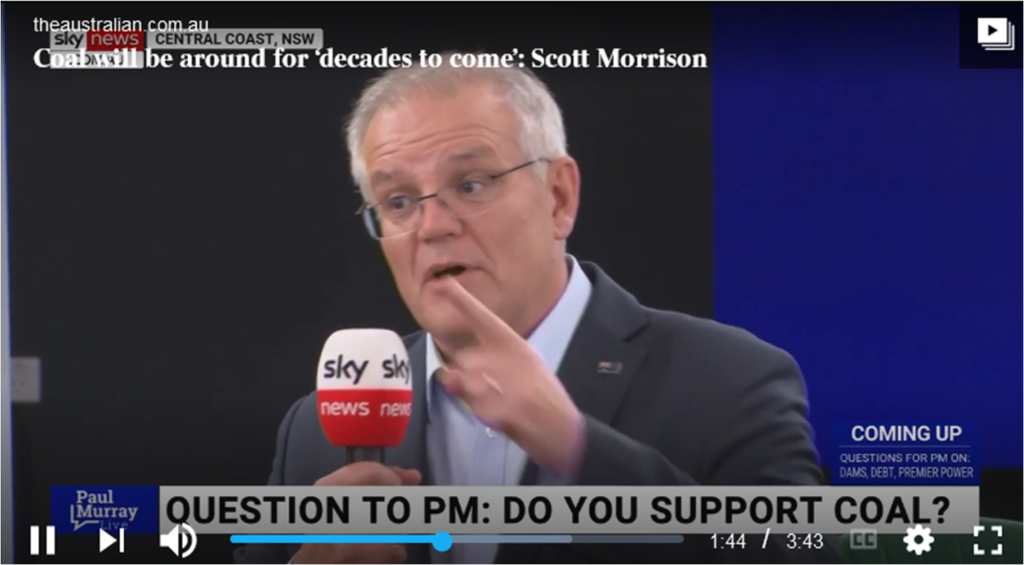
If that wasn’t enough, here’s a choice of some of Scotty’s thinking about stopping our slide down the slope to runaway global warming and possible near-term extinction:
via the Guardian:
09/09/2021 via the Guardian
The future of power: What’s behind Australia’s push for gas-fired energy | ABC Four Corners
We need to turn away from the the road to hothouse hell, and we won’t do this by continuing with the kind of business as usual Scotty from Maketing and his fossil fuel puppets are spruiking!
It seems to taken the clear thinking of Greta Thunberg, a 16 year-old girl who concluded school was pointless as long as humans continued their blind ‘business as usual’ rush towards extinction.
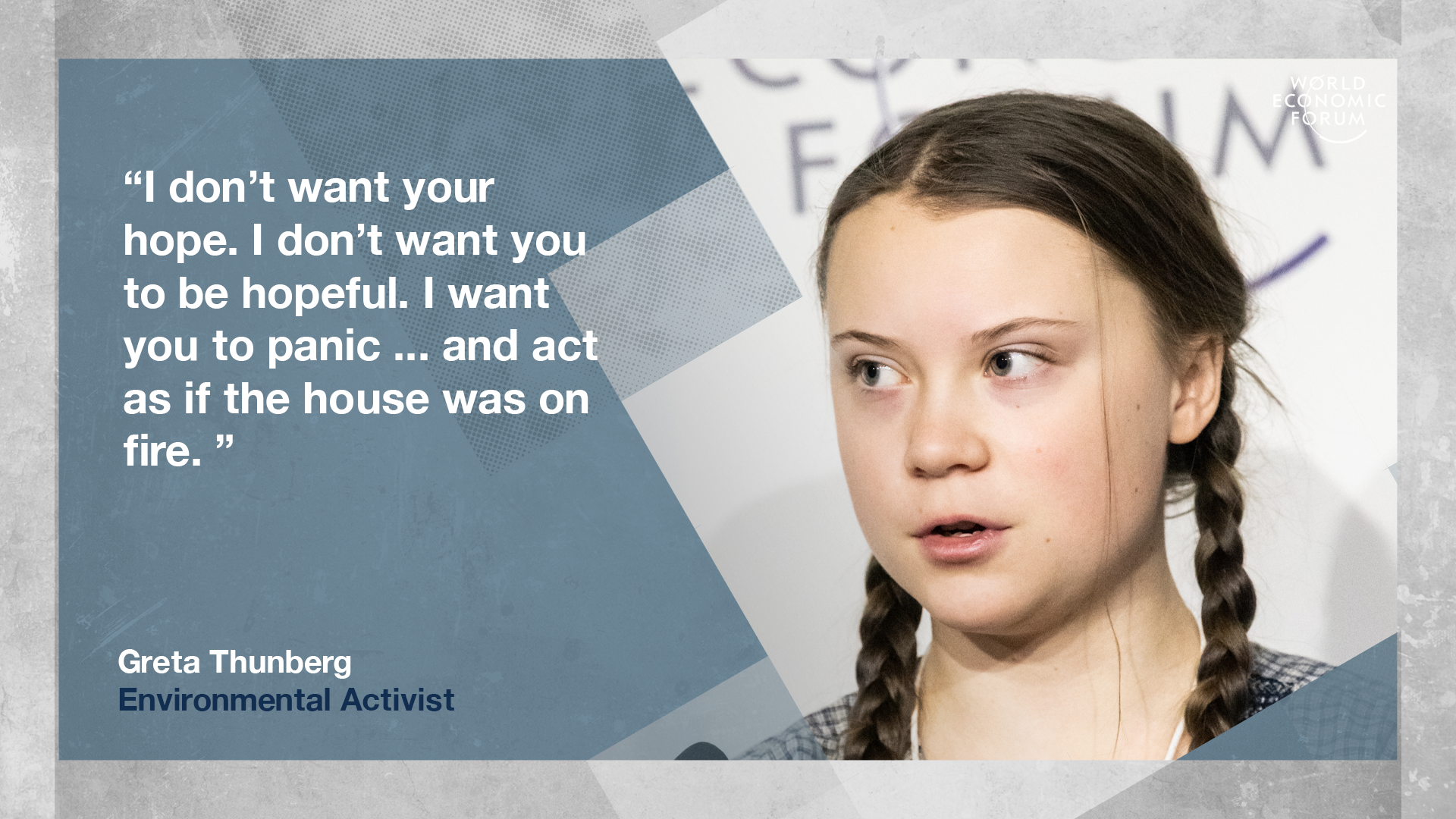
In other words, wake up! smell the smoke! see the grimly frightful reality, and fight the fire that is burning up our only planet so we can give our offspring a hopeful future. This is the only issue that matters. Even the IPCC’s hyperconservative Sixth Assessment WG2 Report that looks at climate change’s global and regional impacts on ecosystems, biodiversity, and human communities makes it clear we are headed for climate catastrophe if we don’t stop the warming process.
Scott Morrison and his troop of wooden-headed puppets are doing essentially nothing to organize effective action against the warming. In fact all they doing is rearranging the furniture in the burning house to be incinerated along with anything and everyone we may care about.
In Greta’s words, “even a small child can understand [this]”. People hope for their children’s futures. She doesn’t want your hopium. She wants you to rationally panic enough to wake up, pay attention to reality, and fight the fire…. so our offspring can have some hope for their future. Vote Climate One’s Traffic Light Voting System will help you use your preferential votes wisely on behalf of our young one’s future.

